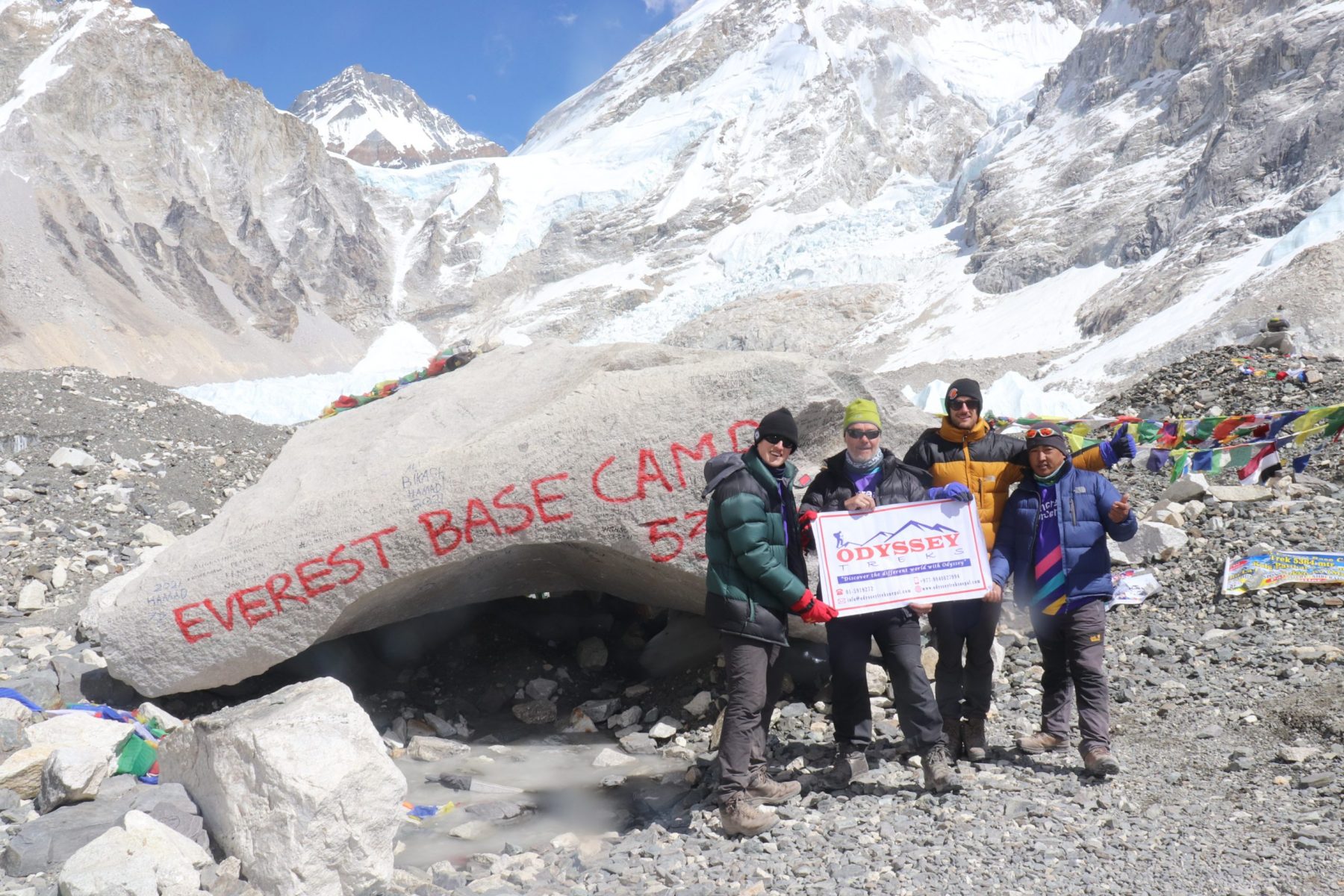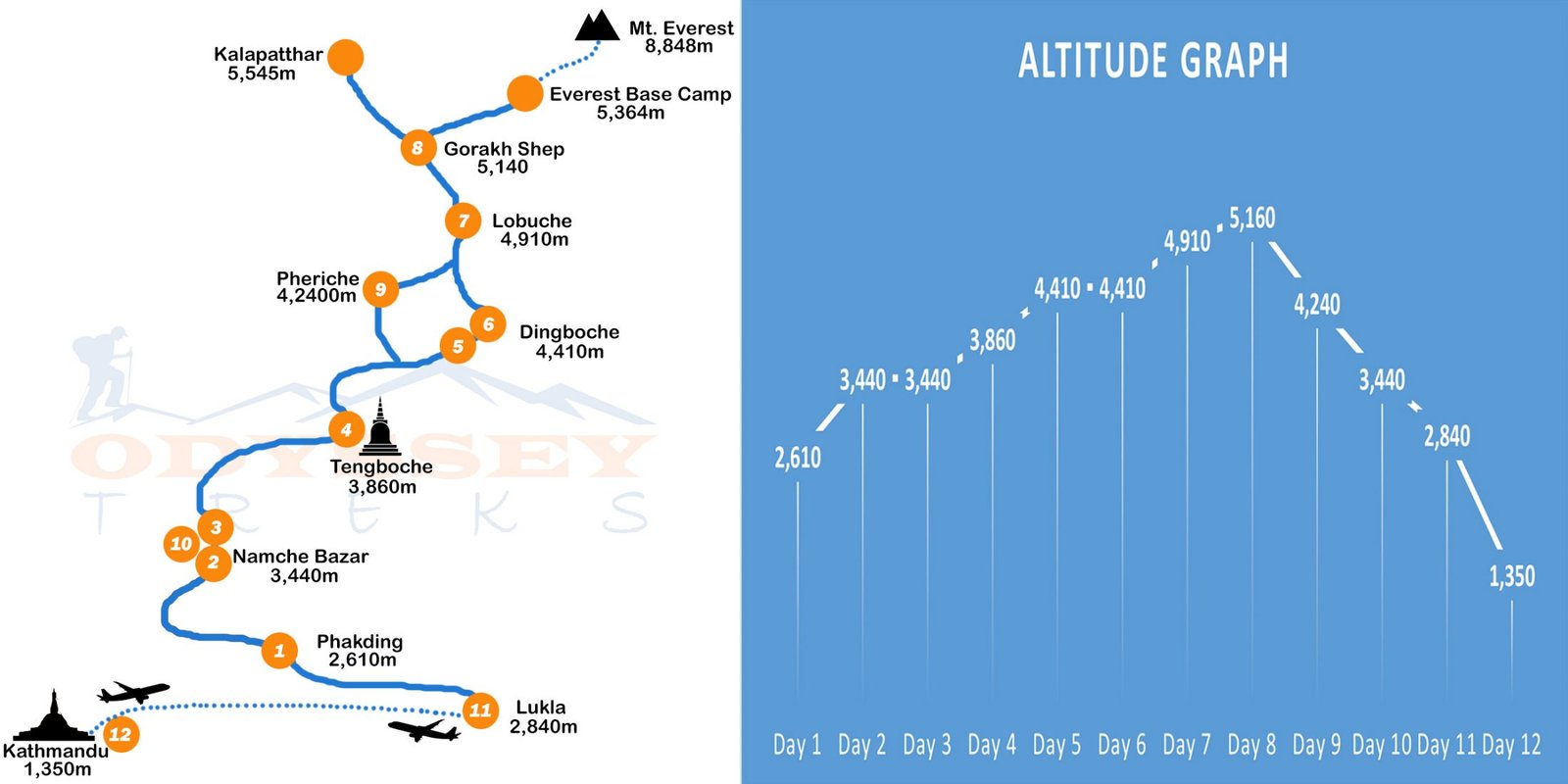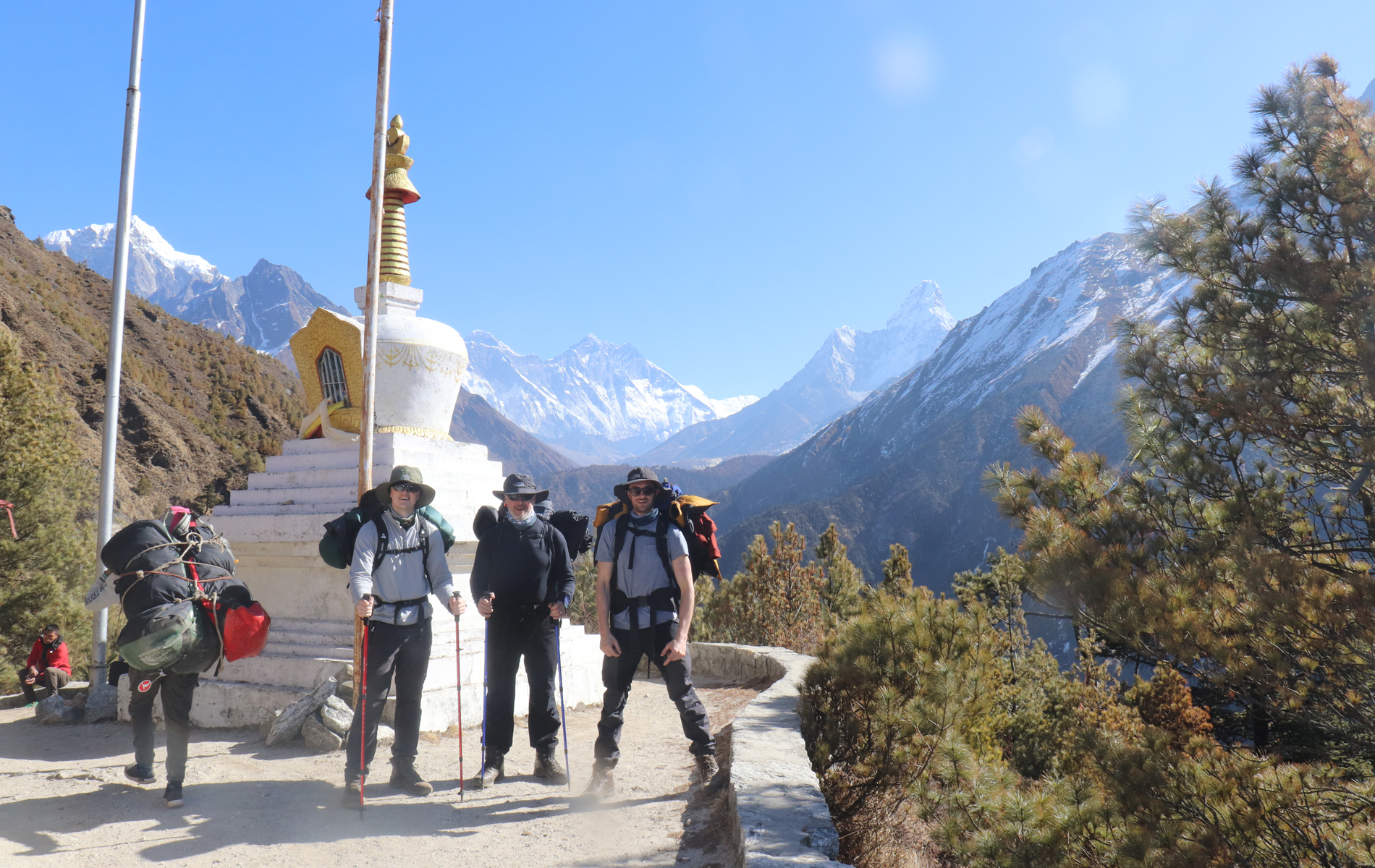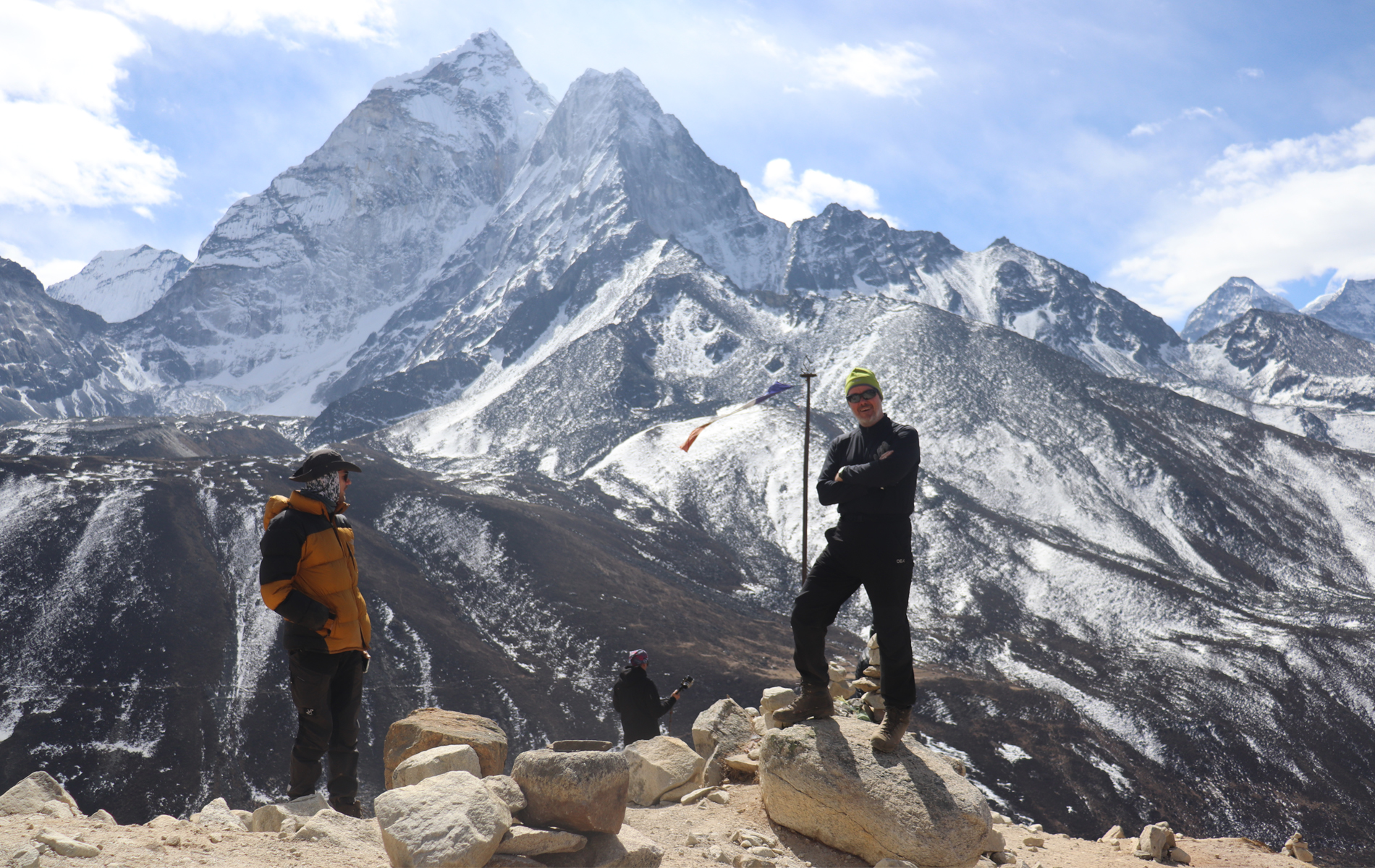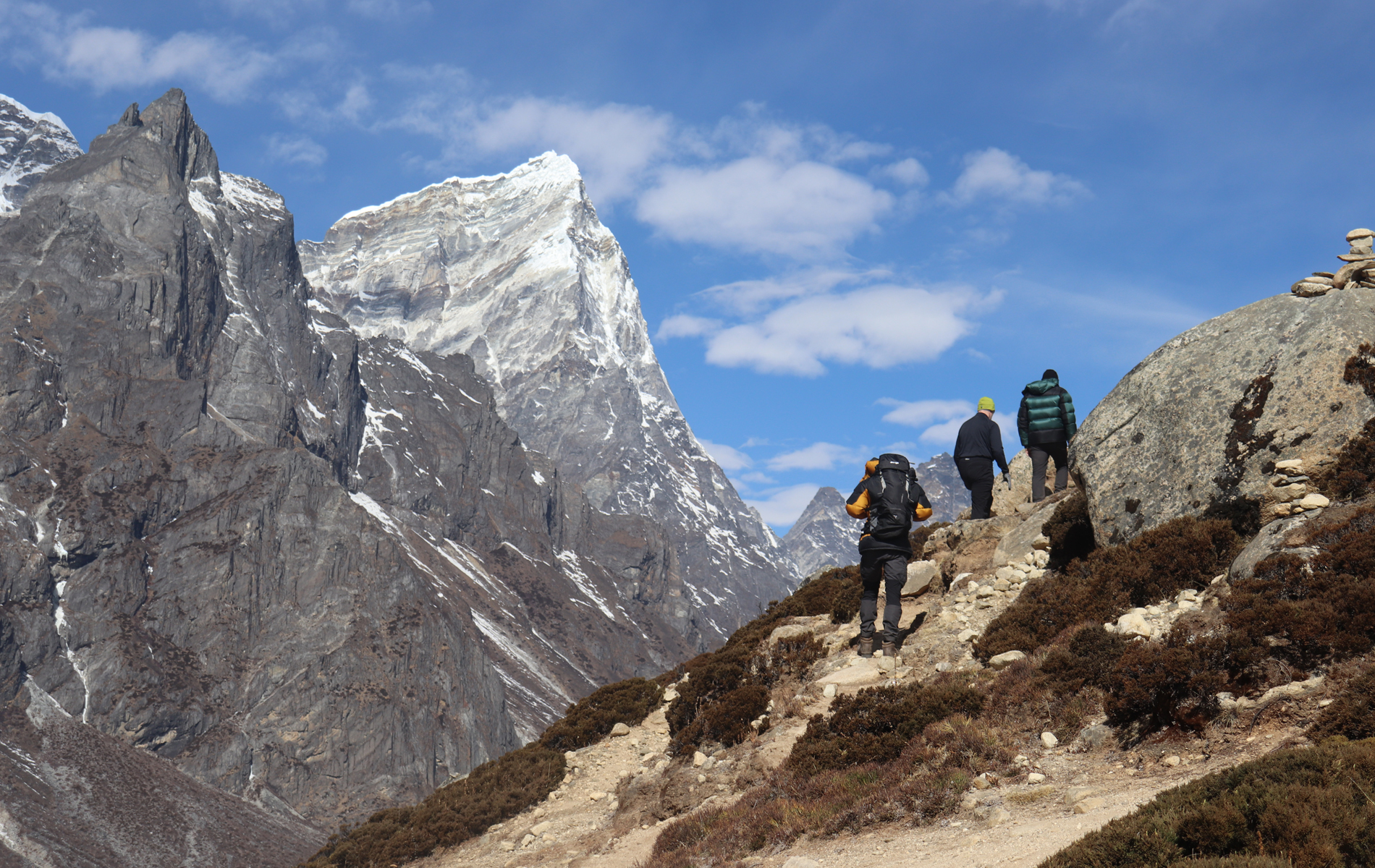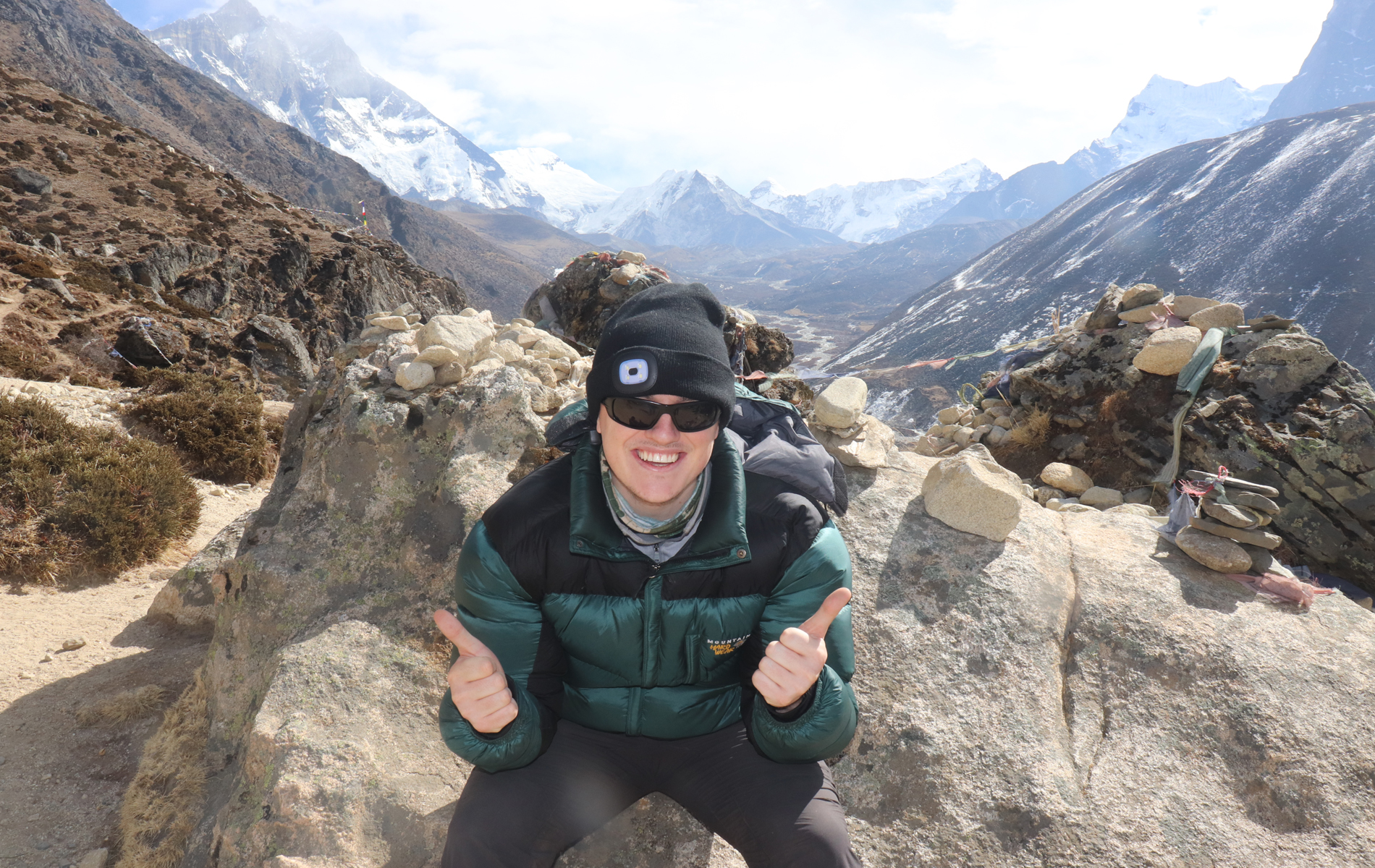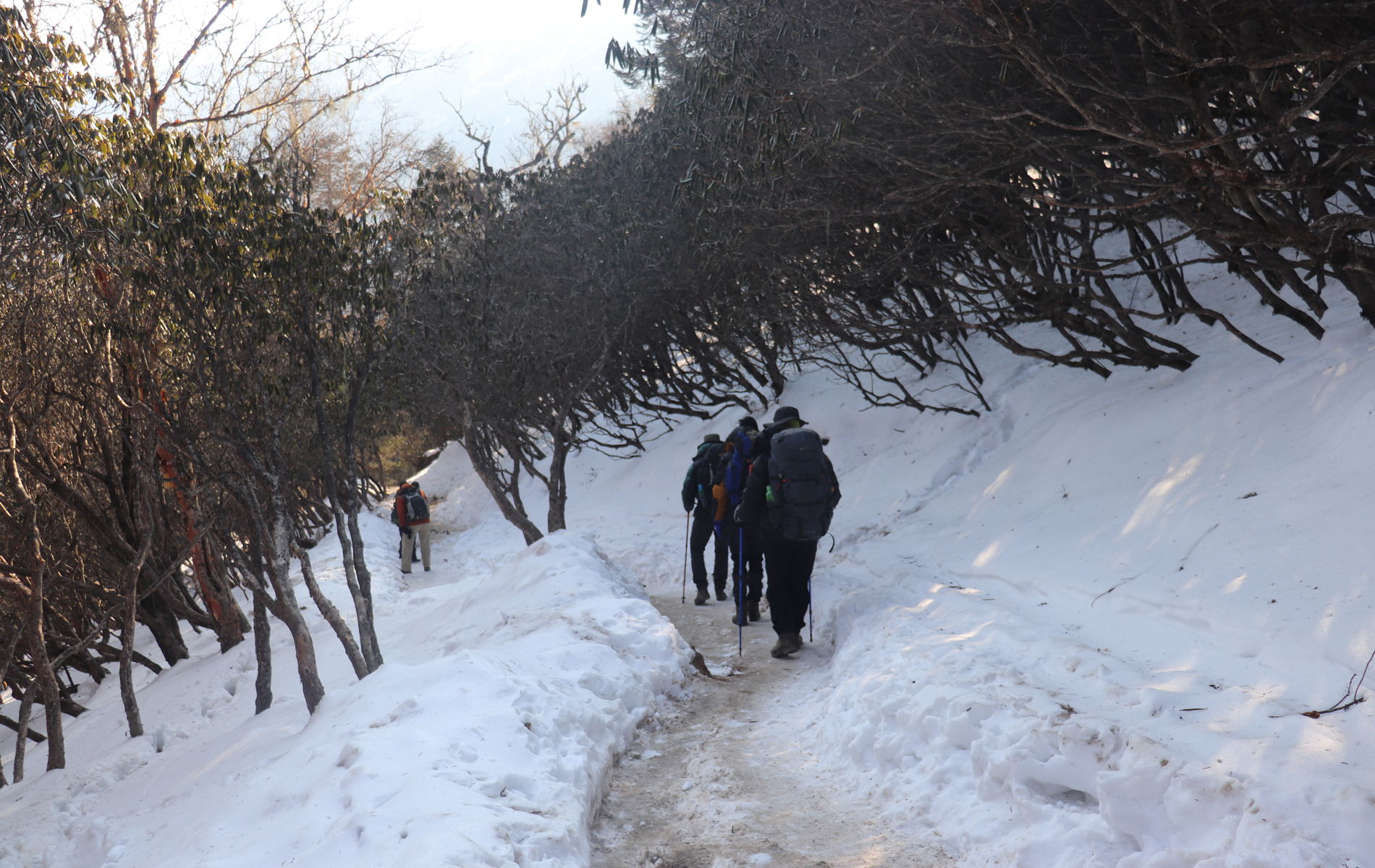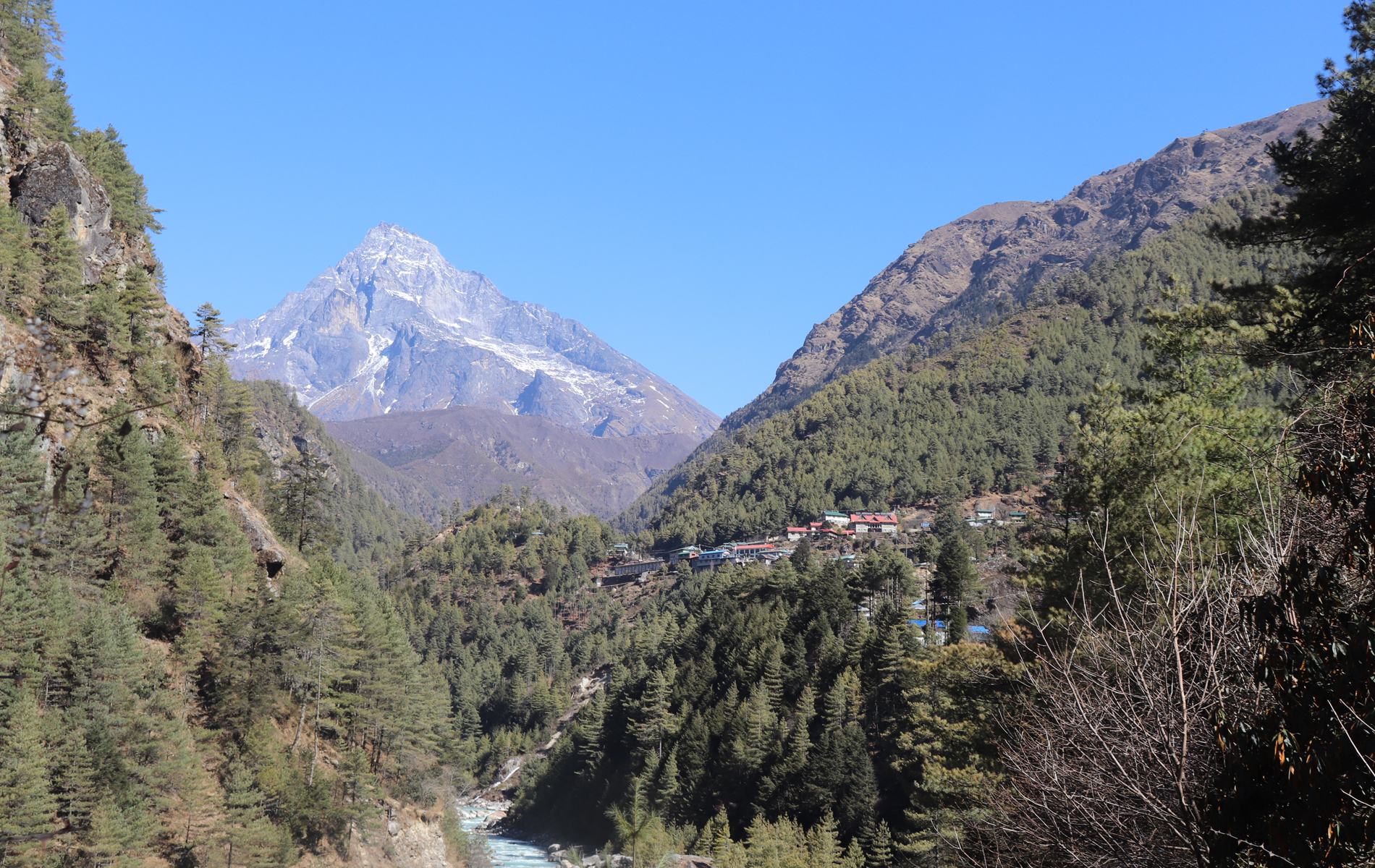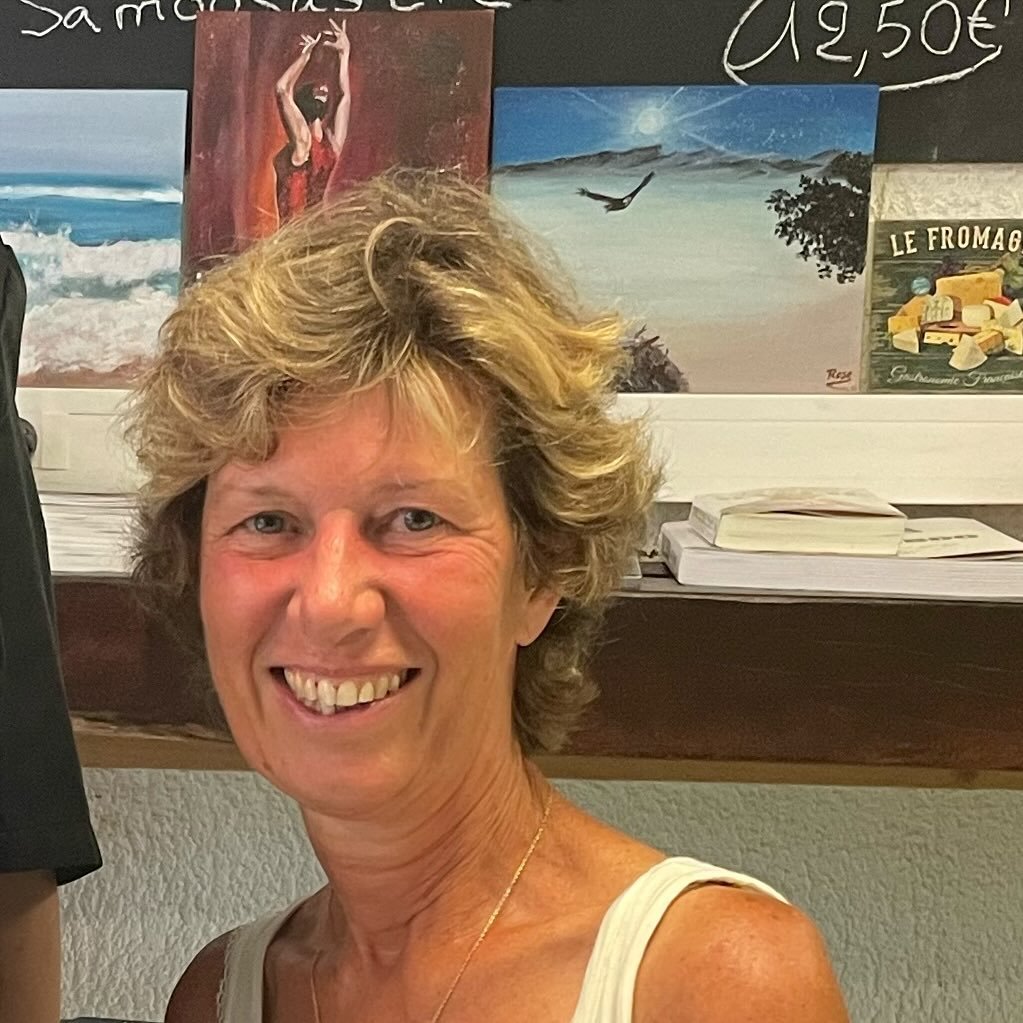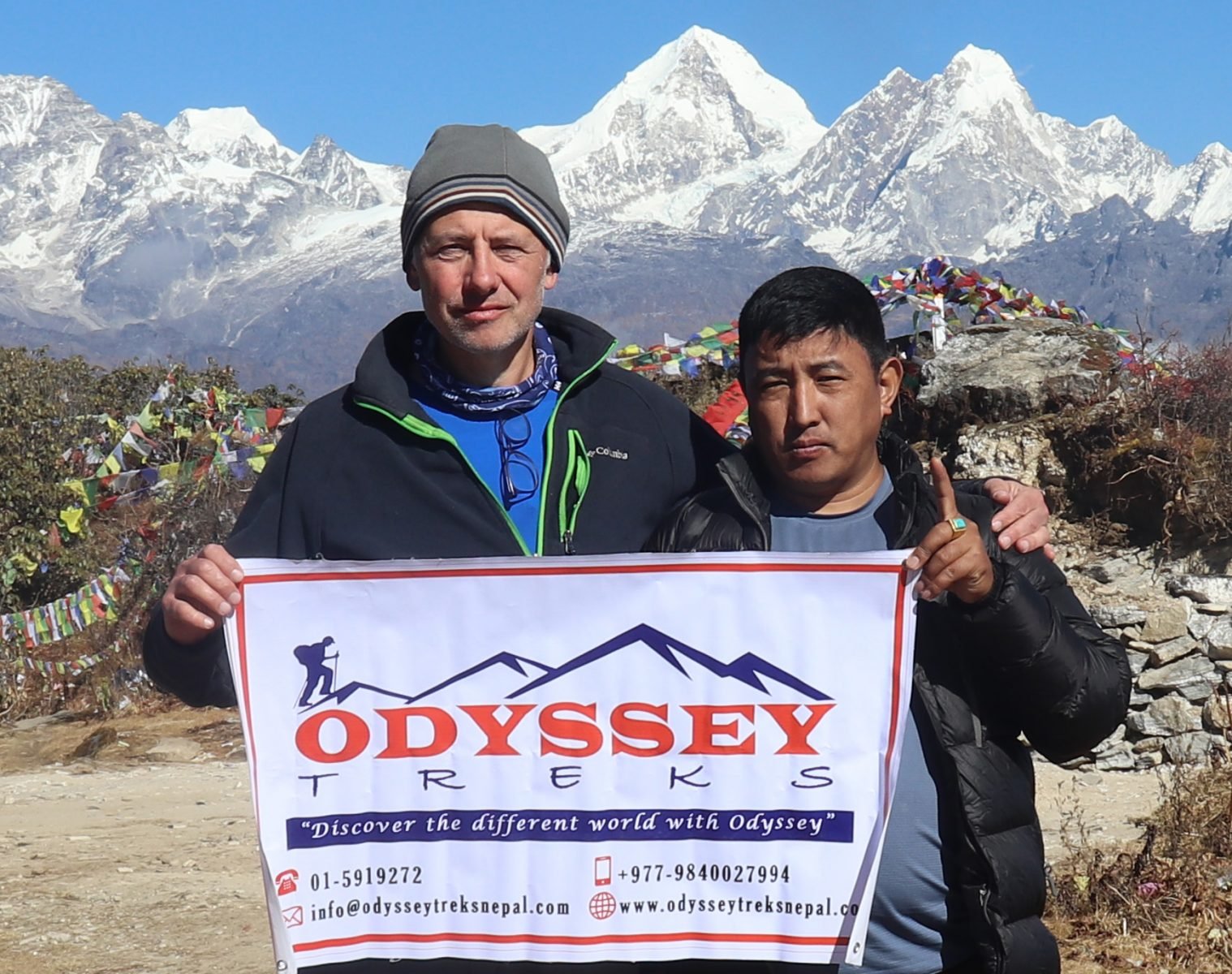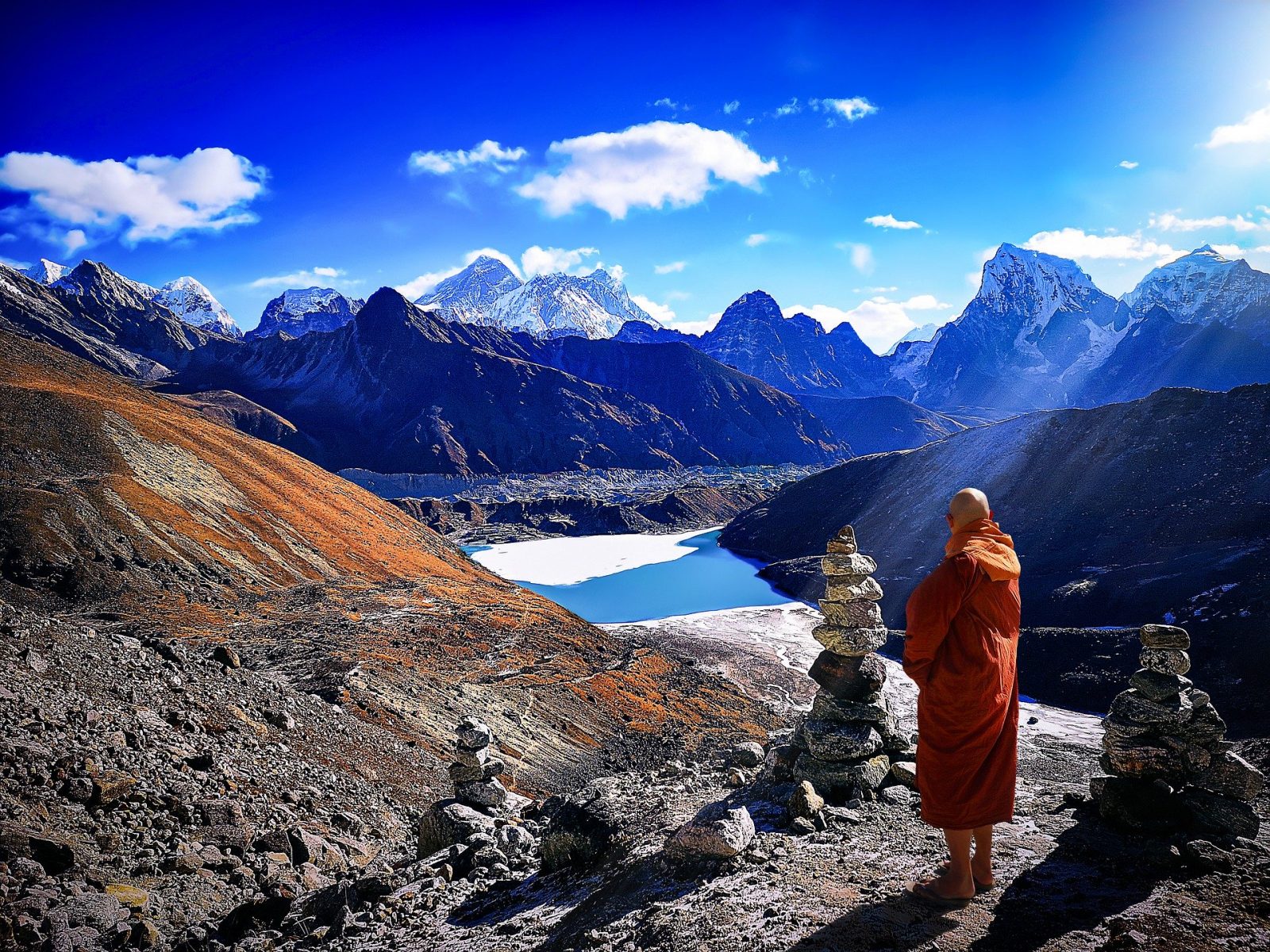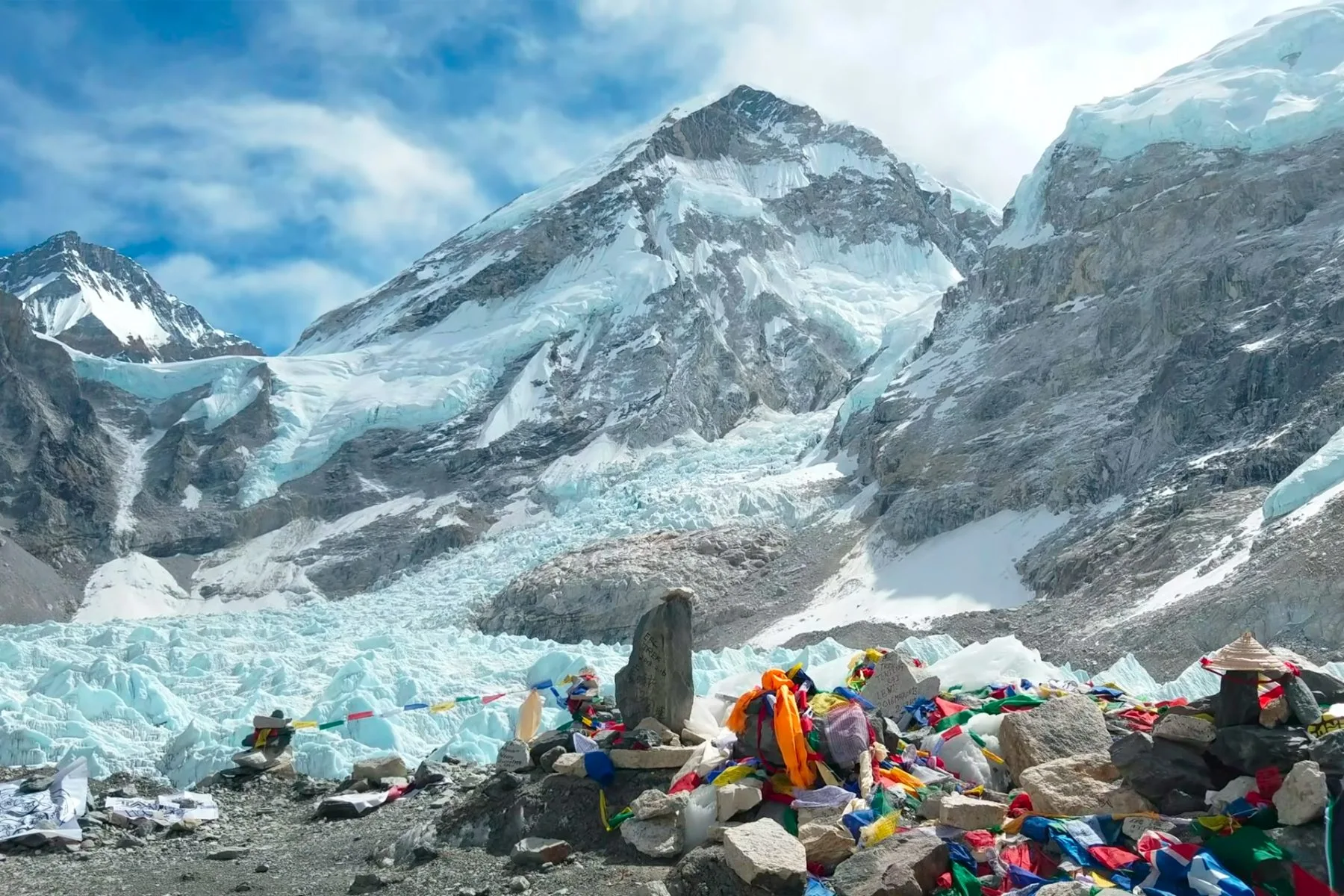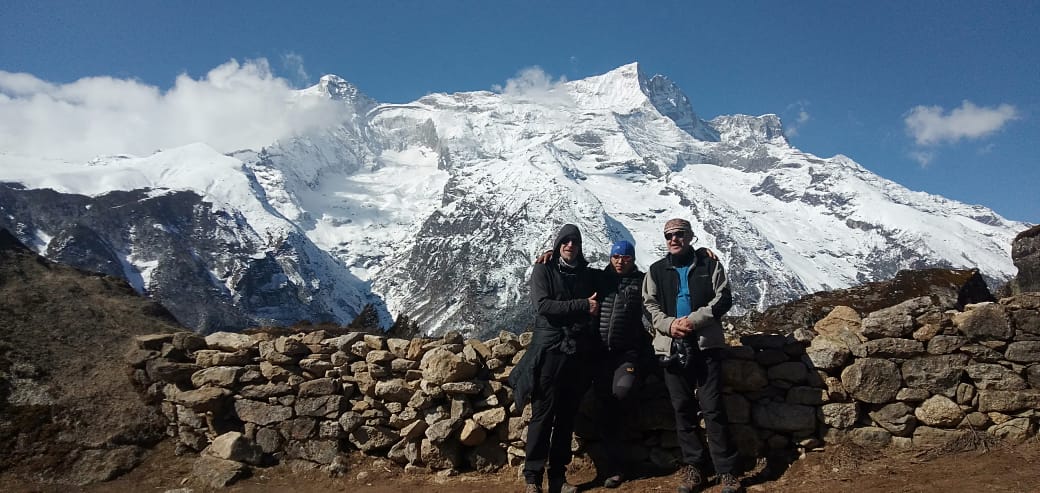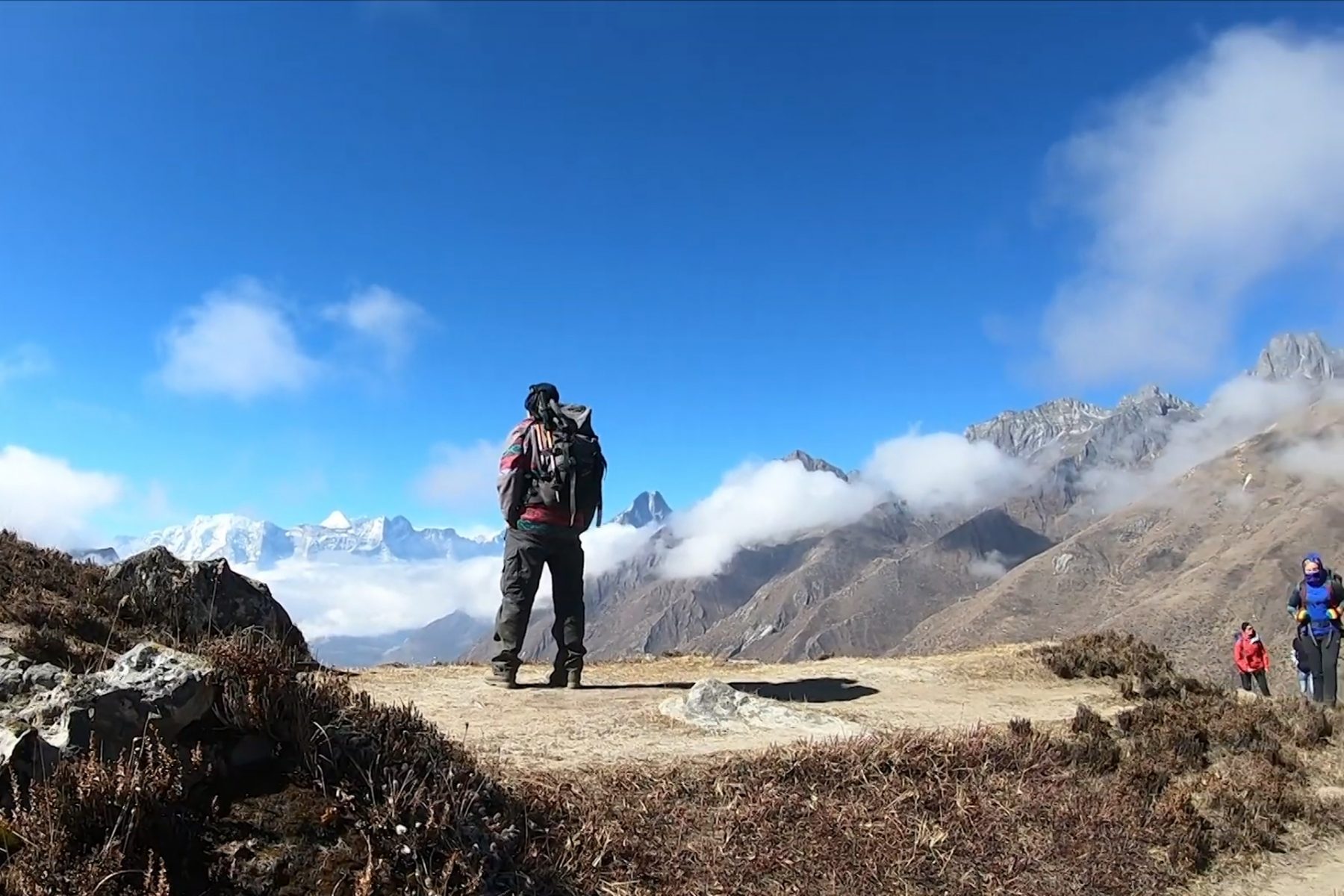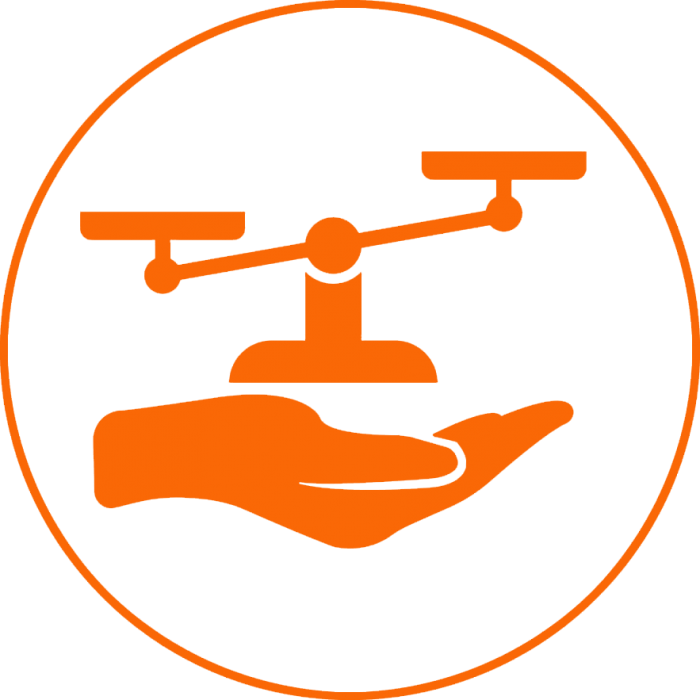Trip Overview
Introduction of Everest Base Camp Short Trek
The Everest Base Camp Short Trek is perfect for those who have a short time in Nepal. The magnificent view of Mount Everest attracts trekkers from all over the world. The Everest Base Camp Trek is 14 days, but you can complete it in 12 days. This trek is in the Everest region, which is the most popular trekking region in Nepal. Among the treks in the Everest region, the Everest Base Camp Trek is the most popular.
Everest Base Camp A short trek is also called a short EBC trek. Everest Base Camp Trekking is one of the top three trekking destinations in the world, with extreme mountain views. That’s why thousands of trekkers every year prefer trekking to Everest Base Camp on their vacations.
Everest is in the Sagarmatha National Park, which is the highest national park in the world and a UNESCO World Heritage Site. Everest Base Camp Short Trek is one of the most beautiful treks in Nepal that takes you to the lap of the world’s highest peak, Everest. EBC is usually the first choice of trekkers who want to trek in the mountains of Nepal.
This 12-day trip fulfills your dream of visiting Mount Everest Base Camp, the world’s highest peak. Everest Base Camp Trekking is popular not only for visiting the top of the world but also for visiting Khumbu Himalayan Glaciers, Khumbu Icefall, beautiful landscapes, Tibetan Sherpa culture, ancient Tibetan monasteries, wild animals, and green forests.
You may like: Jomsom Muktinath Trek in just 12 days, Cost, Itinerary, Package.
View of Mountains above 8,000 meters
The Everest Base Camp Short Trek allows you to see many stunning Himalayan peaks in a short period of time. You can see magnificent views of mountains above 8,000 meters, like Mt. Everest (8,848m), Mount Lhotse (8516m), Makalu (8,481m), and Cho-Yo (8,201m).
While trekking, you will be miles away from the busy lifestyle, cars, conveniences, and daily luxuries and enjoy the natural beauty. Along the way, you will find many monasteries and prayer flags. Visit beautiful Buddhist monasteries with prayer flags along the way, where you can feel the positive vibes.
On the way to the base camp, you will pass many beautiful Sherpa settlements. Interacting with the locals will give you insight into their culture, traditions, and lifestyle. The life of the Himalayan people is simple and charming. Their warm hospitality can make you feel at home. Enjoy a unique taste of the nature, culture, tradition, and daily life of the mountain people. Also, enjoy the impressive views of mountains and vibrant villages.
Along this route, you will find yourself surrounded by beautiful fields, majestic mountains, stunning waterfalls, and pine and rhododendron forests. The view of the beautiful Himalayas will not leave your eyes throughout the journey.
Start Everest Base Camp Short Trek
You will begin your Everest Base Camp Short Trek with a short adventure flight to Lukla. After an exciting and scenic flight of 45 minutes from Kathmandu, you will land at the Tenzing Hillary Airport in Lukla at an altitude of 2,846 meters. Upon landing at Lukla Airport, you will immediately feel the change in the climate. Lukla is in the Khumbu region, which is also the starting point and end point of the trek.
After landing at Lukla airport, you start walking to Phakding village (2,610m). You will reach Phakding in around 4 to 5 hours, passing through various traditional Sherpa villages, incredible landscapes, green forests, and many suspension bridges. This day’s trek will be short and pleasant. You can spend your free time visiting local monasteries.
Namche Bazar (the main Market of The Khumbu Region)
The next day, you will start your trek after breakfast at Namche Bazaar (3,440m). Namche Bazar is the main commercial market in the Khumbu region. You will continue the trek along the northern bank of the Dudhkoshi River, enjoying scenic views. During the Everest Base Camp Short Trek, you will cross many suspension bridges. You will also cross the famous and beautiful Hilary Suspension Bridge. In this area, you will find thousands of prayer flags and huge prayer wheels.
On the way, there is an Everest National Park checkpoint where you have to register for permits. In Namche, you can visit the Sherpa Museum, where you will see art galleries and glimpses of Sherpa’s history. The next day is an acclimatization day. So, the next day, you will also stay in Namche and enjoy the view of Namche Market and the surrounding mountains.
In Namche, you can also visit Hillary School, Sherpa Settlement, Sangboche Airport, and Yak Farms. If you are already curious about Everest, you should not miss the hike up to the Everest View Hotel. From here, you can enjoy the beautiful views of Everest.
Visit Famous Tengboche Monastery
The next day, after breakfast, you will continue your journey from Namche to Tengboche (3,860m). The main attraction of this place is the famous Tengboche Monastery, which is at an altitude of 3,860 meters. The beautiful Tengboche Monastery is perfect for meditation and prayer. The Ama Dablam mountain in the background adds to the beauty of this monastery.
The next day, you will continue your Everest Base Camp Short Trek journey to Dingboche (4,410m). From here, you can see the entire beautiful Himalayan range of the Khumbu region. You can see many peaks from here, like Lhotse (8,516m), Nuptse (7,861m), Makalu (8,485 m), Cho Oyu (8,189m), Ama Dablam (6,812m), Island Peak (6,189m), Mera Peak (6,476m), Lobuche (4,940m), etc.
The next day, you will have an acclimatization day in Dingboche. Your next destination will be Lobuche (4,910m), and to reach it, you will walk along the Khumbu Glacier. The trekking trail also leads to Thukla Hills. In these hills, you will see the memorial statues of climbers who passed away in this area.
Celebrate success at Everest Base Camp.
The next day will be a great day for you, as this day trek will take you to the Everest base camp (5,364m). From Lobuche, you will reach the beautiful Gorakshep village (5,140m), surrounded by snow-capped mountains. You will leave your luggage at Gorakshep and walk to the base camp. When you reach the base camp, you will find that your dream of getting the closest to the highest mountain in the world has come true. Spend some time enjoying the incredible views of the world’s tallest peaks and surroundings. After celebrating your success, you will return to Gorakshep by the same route.
The next morning, the Everest Base Camp Short Trek will take you to Kalapatthar (5,545m). From Kalapatthar, you can see amazing views of sunrise on Mount Everest and other peaks. After spending some time at Kalapathar, you will return to Gorakshep, and from there, you will trek again to Pheriche.
On the way back, the next destination after Pheriche is Namche. The prayer flags, monasteries, and chortens seen on the way will make your journey enjoyable. After arriving at Namche Bazar, the trek ends for the day, and you will go to rest at the lodge.
On the last day of the trek, you will reach Lukla after approximately 8 to 9 hours of walking from Namche. As there is a flight to Kathmandu tomorrow morning, you will spend the night at the hotel in Lukla after making all your preparations to return. On the last day of the trip, you will fly from Lukla to Kathmandu, and your 12-day Everest Base Camp Short Trek is complete.
The Short EBC Trek is designed for all.
This short EBC trek is designed for trekkers who are in good health, have normal trekking experience, and can walk for 6-7 hours per day without any difficulty. This trek does not require good technical skills, but past trekking experience or regular walking habits will make the trip easier.
If you have less time than 12 days, you can do the Everest Base Camp Heli Trek in 9 days. But the trip becomes a bit more expensive as the helicopter is included while returning after completing the trek. The Everest Base Camp Short Trek is not just a journey; it is one of the best mountain treks you will do in your lifetime.
Weather should be considered while trekking in the Himalayas of Nepal; otherwise, the trek can be painful. So, it is better to go trekking in Nepal when it is the best time. There are no restrictions on trekking in Nepal in any season. With proper planning and management, you can do any trek at any time. But trekking is recommended in the best seasons.
Among the four seasons, spring and autumn are the best for Nepal trekking. Autumn and spring have the best climate, and during these seasons, you can have a clear view of the majestic mountains. So, you can plan for the Everest Base Camp Trek during these seasons. Along the trekking route, you can find many tea houses where food and accommodation are available.
Plan your Trip with Odyssey
We arrange the trek according to your wishes and holiday schedule. This short EBC trek will be one of the most unforgettable moments of your life. Check out our itinerary, which is prepared for trekkers who want to do a short Everest base camp trek. But if you have particularly different kinds of plans or interests, we can customize the itinerary according to your needs.
The attractions of Everest Base Camp Short Trek
- An exciting 45-minute morning flight from Kathmandu to Lukla Airport at an altitude of 2,846 meters.
- Trek to the base camp of Mount Everest, the world’s highest peak.
- Magnificent views of Mount Everest, Khumbu Icefall, and Khumbu Glacier.
- An opportunity to experience the age-old culture, tradition, and daily lifestyle of the Mountain people.
- A visit to Namche Bazaar, the major trading center of the Khumbu region.
- A delightful walk through a dense forest of rhododendron trees and lush vegetation.
- A beautiful view of the sunrise from Kalapatthar.
- A visit to Tengboche Monastery, the largest and most famous Buddhist monastery in the Everest region.
- A visit to the world-famous Everest National Park is listed as a UNESCO World Heritage Site.
- Beautiful view of the suspension bridge and prayer flags on the way.
Food and accommodation during the Short EBC Trek
During the Everest Base Camp Short Trek, you will find many teahouses and hotels run by the locals. Teahouses are a type of small lodge where food and accommodation are available for trekkers. These are simple rooms with beds, pillows, mattresses, and blankets. Extra blankets are available if it’s cold, or you can use your sleeping bag.
These teahouses serve Nepali food as well as continental food. Depending on the location, some tea houses have rooms with attached bathrooms, while others have fewer facilities. Hot water for bathing is available in almost all places, but if not, it is available at your request. Not just simple teahouses, but if your budget is high, luxurious hotels are also available.
Everest Base Camp Short Trek Cost
The total cost of your Everest Base Camp Short Trek depends on the route, trekking agency, service, and several other factors. The cost can be estimated based on the preferences of the trekkers. So, to determine the cost, trekkers have to decide what kind of service they want to take. It also depends on the size of the trekking group. If you are single, it will be a little more expensive; if you are in a group, the cost will be less. If you are doing luxury trekking, then it will cost around $4,500, but if you are doing a simple budget trek, then you can do it for $1,350.
The Difficulty of Everest Base Camp
Before starting any trek, it is important to know how difficult or easy the trek is. Weather is also a factor that can make any trip difficult or easy. The Everest Base Camp Short Trek is suitable in spring and autumn and is also a bit easier.
It is easy at lower altitudes but somewhat challenging at higher altitudes. This trip is for everyone and can be completed with good trekking preparation and a bit of self-determination. No hard-core technical skills are needed to complete this trek. Although hard-core technical skills are not required, one must be able to walk for a long time, as this trek involves a lot of up-and-down climbing.
Another aspect that makes this trek difficult is its altitude, which can sometimes lead to altitude sickness. So, it is important to acclimatize your body before attempting the next altitude. To avoid altitude sickness, you should acclimatize yourself one day at Namche and one day at Dingboche. This trek is moderate to strenuous, so you need good physical fitness to complete the trek.
Best seasons for Everest Base Camp Trek
The weather is important for trekking in Nepal. If you come to visit Nepal when the weather is not good, it can cause difficulties. So, before trekking in the Himalayas of Nepal, it is better to know which seasons are best for trekking. During autumn and spring, there is not much rain and not much cold, which makes it easy for trekkers to complete the trek.
These seasons have the best climate. So, during these seasons, you can get a clear view of the majestic mountains and surroundings. You can trek according to your wishes throughout the year, as there are no restrictions on trekking in Nepal in any season. With proper planning and management, you can trek at any time. But we recommend trekking in the best seasons (autumn and spring).
What about security during the Everest Base Camp Short Trek
Everest Base Camp is a center of attraction for trekkers from all over the world. Every year, around 30,000 tourists visit this area for trekking. All the trekkers return after completing the trek well. So, there is no doubt that the Everest Base Camp Short Trek is safe for trekkers. There is no problem if you trek without a guide, porter, or agency. But trekking through a local trekking company in Nepal is easier, better, and safer for you. The safety of our customers is the most important thing to us.
All our guides and porters are selected for the trip. The government of Nepal licenses all the selected guides, and the porters are well-trained. Our guides and porters will protect you as well as your belongings throughout the trek. But during the Short Everest Base Camp Trek, we advise you to take care of your personal belongings as well. Take your personal belongings with you to the room and lock your room if necessary.
Altitude Sickness and Acclimatization During EBC Trek
Altitude sickness is a common problem on high-mountain trips, but you can avoid it by taking some precautions. Yet, if you ignore the symptoms of altitude sickness, it can cause serious problems. So, acclimatization days are necessary to avoid the problem of altitude sickness.
Acclimatization is very important during a high trek like the EBC. Generally, if you go above 2,500 meters, you are at risk of altitude sickness. At an altitude of 3,500 meters, there is a lack of oxygen, so your body needs more time to adjust. Gaining an altitude of more than 5,000 meters requires serious attention. If you fail to acclimatize well to low altitude, you will struggle higher up. So, we need to have an acclimatization period in the schedule for the Everest base camp trek.
It is clear that the more time you spend at the critical points, the better you will feel. So, it is necessary to have acclimatization days at Namche and Dingboche during the base camp trip. The itinerary we design helps prevent altitude sickness as we allow time for acclimatization and slow ascents. Yet, you don’t have to worry too much, as our team takes care of your health and also suggests ways to take precautions.
Visit also: Mera & Island peak climbing 19 days, Cost, Itinerary, Map
Purified water, Shower, Toilet, and Mobile Battery During Trek
You will have access to boiled, pure drinking water in almost every village during the Everest Base Camp Short Trek. Mineral-bottled water is also available in all the teahouses. Cold water for a shower is free, but it is difficult to take a cold shower as it gets cold in the Everest region. Therefore, it is better to take a bath with a hot shower, and this is possible by using a gas geyser or a hot bucket. But for the hot shower, you have to pay an extra 4–5 dollars per head. In terms of camera and mobile batteries, it’s a good idea to carry some extra batteries if possible. If not, you can charge mobile or camera batteries at almost every teahouse where you stay overnight. But to charge, you have to pay a cost of around 3–5 dollars per battery.
Toilets are available at almost all places during trekking, but they are simple toilets, i.e., squat toilets. Don’t expect all the bathroom amenities you have at home. These toilets are usually outside the room. But in some good hotels and lodges, the western-commode toilet is attached to the room. At lower altitudes, you can find western commodes, but most guesthouses along the Everest Base Camp Short Trek route above 4000 meters have squat toilets. It is better to carry essential toiletry items such as toilet paper, hand washing liquid, wipes, sanitizer, soap, and a small dry towel with you, as these are not available in all places.
Permits for Everest Base Camp Trek
Trekking in the Himalayan region and higher national parks of Nepal requires a permit. Permits vary by region and may also vary by specific trip. Since Everest Base Camp is not a restricted area, it does not need special permits, but other permits are required. TIMS (Trekkers Information Management System) is still in use in other areas but is not currently applicable to the Everest region.
The Khumbu Pasang Lhamu Rural Municipality Entry Permit has been implemented since October 1, 2018, by replacing the TIMS Card. This permit is implemented by the local government of Khumbu, according to which Rs 2,000 is collected from each foreigner. This permit should be taken in Lukla, as it is not available in Kathmandu.
Another permit you need for the Everest Base Camp Short Trek is the Everest National Park Entry Permit. You can get this permit at the Nepal Tourism Board office in Kathmandu. For convenience, you can get this permit at the entrance of Everest National Park. But you don’t have to worry about it, as we conduct the trekking in the package; it is all our responsibility. Our guide will arrange all necessary permits for trekking.
Weight to be carried on Everest trekking
During the Short EBC Trek, you carry some of your personal items like warm clothes, water, snacks, sunblock, a camera, a towel, soap, a toothbrush, and more. Generally, these lightweight items range from 5 to 10 kilograms (10 to 20 pounds). If your luggage is small or you can carry it yourself, you don’t need a porter. But you need a porter because there are usually other goods besides lightweight goods.
If you hire a porter, then you don’t have to worry about carrying heavy goods. The maximum weight carried by a porter is 20 kg. There is a provision for porters to carry a maximum weight of 20 kg while trekking in any area of Nepal. Trekking companies usually provide one porter for two people, and you can share that porter with two people. If you want to carry more weight than this, you can hire more porters.
Emergency During Everest Base Camp Short Trek
You can do the Everest Base Camp Short Trek without any agency, porter, or guide. But if you trek through a local trekking agency, it will be easier for you in various situations. Generally, if you are not well or have any problems, our team will take care of you. But in case of an emergency, your guide will call us immediately, and we will arrange for a helicopter. According to the information from the guide, the helicopter will take you to the hospital in Kathmandu from where you are. You will have to pay for all the hospital expenses and the helicopter.
Trip Itinerary
Fly Kathmandu to Lukla (2,840m) and start trek to Phakding (2,610m) – 4 to 5 hours walk.
On the first day of the trip, you will transfer from the hotel to the airport for your flight to Lukla. After a thrilling and scenic flight of 45 minutes, you will land at Lukla’s Tenzing Hillary Airport at an altitude of 2,846 meters. You will feel the difference and change in weather in this hilly area. From Lukla, you will now start walking to Phakding.
The journey continues through various traditional Sherpa villages, incredible landscapes, green forests, and many suspension bridges. After approx. 4 to 5 hours of walking, you will reach Phakding. On this day you will spend the night in a lodge in Phakding.
Trek Phakding to Namche Bazaar (3,440m) - 6 to 7 hours walk.
After breakfast on the second day of the trip, you will proceed from Phakding to Namche. Walk along the northern bank of the Dudhkoshi river enjoying the scenic view. On the way before reaching Namche, you will cross the famous Hilary Suspension Bridge as well as several other suspension bridges.
Crossing the suspension bridges will make the journey more exciting. You have to register the trekking permit at the Everest National Park check post on the way. After 6 to 7 hours of trekking, you will reach Namche Bazaar and spend the night there.
Acclimatization and exploration day at Namche Bazar.
This day is acclimatization day so on this free day, you can enjoy Namche Bazaar. Acclimatization day is essential to avoid the problem of altitude. Namche Bazaar is the largest, most famous, and main commercial market in the Khumbu region.
You can spend your day exploring Namche market and surroundings. It is a beautiful market with many nice hotels, restaurants, and shops. You can also visit the Sherpa Museum, Hillary School, Sherpa Settlement, Sangboche Airport, and Yak Farms there. If you are keen to get a glimpse of Mount Everest from a distance, you can go on a short hike to the Everest View Hotel. From Everest View Hotel, you can see the panoramic views of Everest and other surrounding mountains.
Trek Namche Bazaar to Tengboche (3,860m) – 5 to 6 hours walk.
On the fourth day of the trip, after breakfast, your journey starts for Tengboche. The journey from Namche to Tengboche is full of ups and downs. The trail through the forest is a bit challenging but the scenic views are rewarding. The main attraction of this place is the beautiful Tengboche Monastery at an altitude of 3,860 meters. It is the largest and most famous world-class monastery in the Everest region. This monastery is beautiful and peaceful, so it is suitable for meditation and prayer.
Tengboche to Dingboche (4,410m) – 5 to 6 hours walk.
After breakfast on the fifth day of the journey, you will be ready for Dingboche. On the way, you will see many beautiful chortens, mani walls, prayer flags, and monasteries. From Tengboche, you will walk downhill to Debuche and cross the Imja river to reach Pangboche village.
Visit the beautiful Panboche Monastery in Pangboche village. As you cross the Pangboche village, you can enjoy a breathtaking view of Mt Everest, Lhotse, and the Ama Dablam mountains. After about 5 to 6 hours of walking from Tengboche, you will reach Dingboche where you will spend the night.
Acclimatization and exploration day at Dingboche.
The sixth day of the trip is an acclimatization day. By reaching Dingboche, you will gain enough altitude. So, you need to acclimatize your body once again. Your body needs time to adjust to the thin air and high altitude. To use the time on this day, you can visit Dingboche Monastery and hike to Nangkhartsang Peak. From here you can see the panoramic views of Mount Everest, Ama Dablam, Lhotse, Nuptse, and Cho Oyu mountains.
Trek Dingboche to Lobuche (4,910m) – 5 to 6 hours walk.
On the seventh day of the journey, after breakfast, you begin to walk to Lobuche. The trail leads uphill near the ridge above the village of Pheriche. From there the trek takes you to the Thukla hills. There you will find yourself walking alongside the Khumbu Glacier. At Thukla hills you will see memorial statues of climbers who died in the area. A 5 to 6-hour walk will take you to Lobuche where you will spend the night.
Trek Lobuche to Gorakshep (5,160m). Excursion to Everest Base Camp (5,364 m) and back to Gorakshep – 8 to 9 hours walk.
After breakfast, you will prepare for a big and extraordinary day. This day trip will take you to your dream destination, Everest Base Camp. This day walk will be the longest walk of your trip. It takes about 8 to 9 hours to reach the base camp from Lobuche and back to Gorakshep. Gorakshep is a beautiful village surrounded by snow-capped mountains. There you leave your luggage and head for the base camp.
When you reach the base camp, you will be close to the highest peak in the world. Celebrate your success and enjoy the incredible views around. Capture photos and videos of the surroundings on camera for sweet memories of your life. After spending some time at the base camp, you will return to Gorakshep and spend the night there.
Excursion around Kalapatthar (5,545 m) and trek down to Pheriche (4,240m) – 6 to 7 hours walk.
Early morning you will hike to Kalapatthar. The main purpose of a hike up to Kalapatthar on this day is to capture the beautiful view of the sunrise in the morning. The sunrise view from Kalapatthar is amazing. Kalapatthar is the perfect viewpoint to enjoy the sunrise at the top of the world’s highest peak, Mount Everest.
There you will spend some time admiring the view of the sunrise. Enjoy the surrounding mountains, and capture some photos and videos on the camera. From there you will come back to Gorakshep. After breakfast at Gorakshep, you will walk to Pheriche.
Trek Pheriche to Namche Bazar (3,440m) – 7 to 8 hours walk.
After a hot breakfast on the tenth day of the journey, you walk to Namche. There will be an opportunity to visit the beautiful Sherpa Namche Bazaar once again. On the way back to Namche, you can see many monasteries, prayer flags, and chortens. If you are very lucky you will catch a glimpse of musk deer, monal, blue sheep, etc. during the walk. After 7 to 8 hours of walking, you will reach the destination of the day, Namche Bazaar. You will once again spend the night at the delightful Namche Bazaar.
Trek Namche to Lukla (2,840m) – 8 to 9 hours walk.
After breakfast, the journey proceeds from Namche to Lukla. The walk from Namche to Lukla will be long and this day is also the last day of your trek. It takes about 8 to 9 hours to reach Lukla from Namche. The journey will continue through many forests, small villages, and suspension bridges. The prayer flags on the suspension bridges while crossing the bridges make the journey more pleasant.
Fly Lukla to Kathmandu (1,300m)– 45 minutes.
This is the last day of your entire trip so you will take an early flight back to Kathmandu from Lukla. After 12 days of the long trek, this short flight will be relaxing for you. After arrival in Kathmandu, our guide will take you to your hotel. After lunch, if you want to do some shopping, you can visit the local market.
Why not list the price?
Each client's needs may be different. The price of the trip varies according to the size of your group and the service you want. The cost of the trip is calculated according to the type of service and accommodation chosen by our customers.
Each trip is customized to fit the client's needs and group size, so the price of each organized trip is different. Please let us know the service you want and the size of the group. We create trips to suit your taste and travel budget per your requirements. Hope you find our price calculation reasonable according to your needs and preferences.
Google Reviews
Guest reviews
Thank you a lot for your organization about my trek. It was a superb experience; all was perfect. Karma is a very nice person and a good guide. I appreciated trekking with Odyssey (a reliable Nepal trek operator). If I come back to Nepal, I will be happy to...
Have just returned from my fourth trip to Nepal and as always Odyssey Treks organized everything superbly. We visited Makalu relatively late in the season and were rewarded with empty trails and amazing weather. Karma was as entertaining, friendly, and informative as ever along with Ang Dawa Sherpa who...

